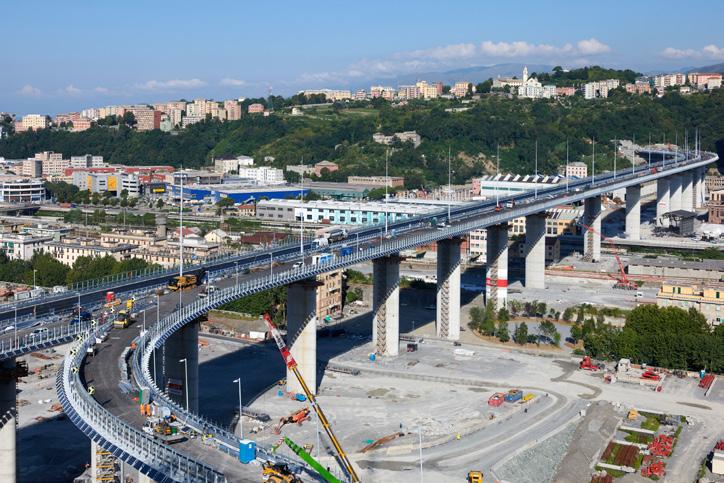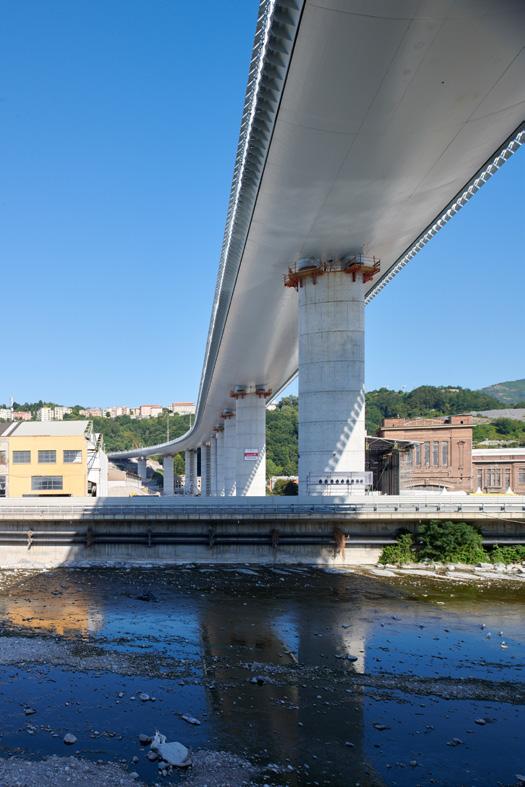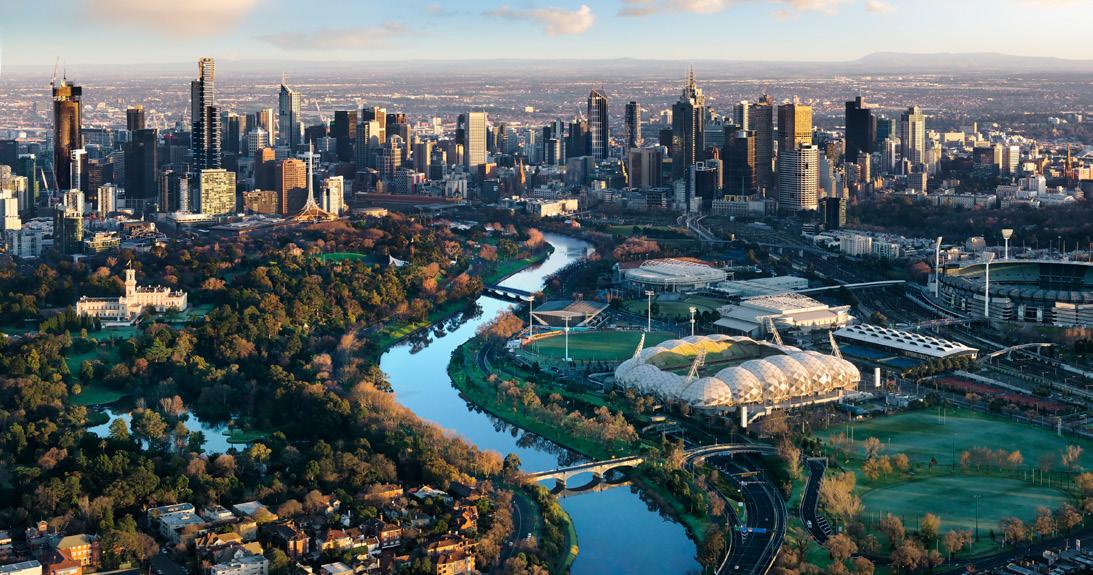
4 minute read
THE NEW GENOA BRIDGE: A SOURCE OF INSPIRATION
Marco Assorati | Executive Director, Asia Pacific, Webuild
The Genoa San Giorgio Bridge, built by Webuild and inaugurated on August 4 2020 as the replacement to the Morandi Bridge that tragically collapsed two years ago in the Italian port city of Genoa, has become a source of inspiration – so much so that the Italian Government wants to replicate its success on other public works across Italy.
What has captured the imagination is the way the €202 million (A$332 million) bridge was built. For a country inured to projects being stuck in bureaucratic paralysis for years, the innovative fasttrack model applied to its construction allowed Webuild (Italy’s biggest infrastructure group, formerly known as Salini Impregilo) and its partners to build it in record time.
Known as the ‘Genoa Model’, Webuild worked closely with the Mayor of Genoa acting as Extraordinary Commissioner of the project to avoid the adversarial rapport that can sometimes develop between client and contractor. By developing a strong team spirit, every contractor, supplier and public administration official working on the project came to share the same goal: to build the bridge as quickly as possible to re-establish a major transport artery that is crucial to the local economy.
The pace of work was quick and demanding. A month after the tender was awarded in December 2018, the contract was signed – even before the technical designs were completed. The necessary permits, meanwhile, were given without delay – a rarity in Italy.
Webuild’s workers began driving piles into the dry Polcevera river-bed while demolishers were still removing the wreck of the Morandi Bridge. Once the first piers were erected, they started installing the steel spans for the deck while the remaining piers were still being completed.
The construction site hummed with activity 24 hours a day, seven days a week – save for Christmas and a few days of bad weather. The work continued even during COVID-19. By declaring the

project of national importance, the government allowed work to progress after extra health and safety measures were put in place to mitigate the risk of infection among the workers.
From the laying of the first pier to the completion of the bridge, it took 420 days, representing around 10,100 hours of work. At the peak of construction activity, more than 1,000 people specialised in 40 trades worked simultaneously across 20 stations on site.
The number of small- and medium-sized companies involved in the project was also considerable. Nearly 330 of them from across Italy provided more than €160 million (A$263 million) worth of supplies and services, equivalent to almost 80 per cent of the project’s value.
The simplicity of the design by Renzo Piano, the star Italian architect behind One Sydney Harbour, made the work easier. Reflecting the trend towards modular construction, the bridge’s sections including the spans were prefabricated, adopting the same shape and size in many cases. The piers are also identical in size, sharing the same external dimensions of 9.5 metres by 4 metres. This facilitated the use of a single type of external formwork for their erection. The aesthetics of the structure were also a key consideration given the bridge needed to blend
into the surrounding urban environment. For instance, the aggregates used for the concrete came from a single quarry so as to give the piers the same colour and texture.
The bridge has also become the latest example of smart and sustainable infrastructure for the country. The solar panels Webuild had installed along both sides of the deck provide all the energy that the bridge needs to operate. That includes powering the:
18 light posts, each 28 metres high
robots that run along the length of the deck to inspect the structure
accelerometers, extensometers and other sensors that monitor the bridge’s soundness and the traffic that flows across it, and
the database that stores all that information to inform the future design of bridges of this type.
There is a system inside the deck that dehumidifies the air to avoid corrosion. The robots that inspect the deck also clean the solar panels and wind barriers, using rainwater collected from the last storm. When it rains, the bridge’s drainage system helps to protect the environment by channelling the water for treatment before releasing the excess onto the riverbed. The asphalt that was used for the road, meanwhile, contains recycled plastic.
“This bridge represents a new way of doing infrastructure in Italy,” Webuild Chief Executive Pietro Salini said ahead of the bridge’s opening. “(It is) proof that even in Italy, strategic public works can be built within the right timeframe, at the right cost and in respect of norms and safety rules.”

Although Webuild has a combined 114 years of experience building bridges and viaducts for a total of 946 kilometres across the globe, the company continues to refine its expertise in their construction of project after project. That includes the replacement to the Gerald Desmond Bridge at the Port of Long Beach in California, the second tallest cable-stayed bridge in the United States, and the viaduct for Sydney Metro Northwest, the first cable-stayed curved railway bridge in Australia.
FOR MORE INFORMATION PLEASE CONTACT
Marco Assorati
Executive Director, Asia Pacific, Webuild E: m.assorati@salini-impregilo.com











